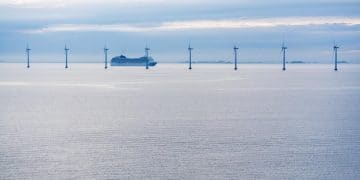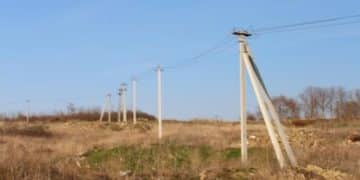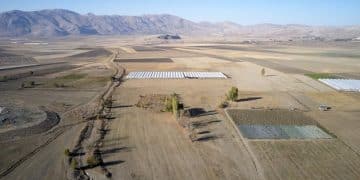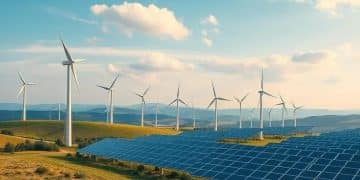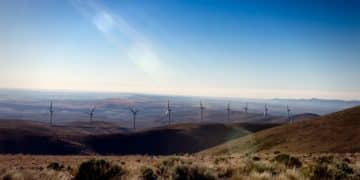Offshore wind energy projects: harnessing the future
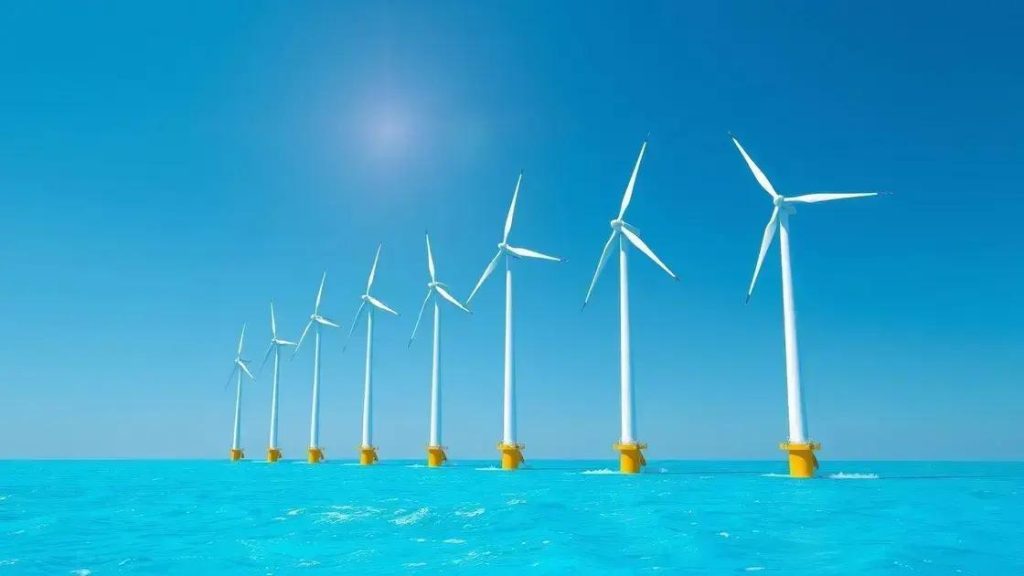
Offshore wind energy projects involve the installation of turbines in ocean waters to generate renewable electricity, offering benefits like reduced emissions, job creation, and significant scalable energy production.
Offshore wind energy projects are becoming a hot topic in the renewable energy sector. Have you ever wondered how they work and what benefits they provide? Let’s dive into this exciting area and discover how these projects are shaping our energy future.
What are offshore wind energy projects?
Offshore wind energy projects are installations built in bodies of water, typically oceans, that harness wind energy to generate electricity. These projects play a vital role in the transition to renewable energy sources, as they can generate a significant amount of power without emitting greenhouse gases. But how do they work, and what makes them different from traditional wind farms?
Understanding offshore wind energy
Offshore wind farms are usually placed far from the shore to take advantage of stronger, more consistent winds. The turbines used are much larger than those on land, allowing them to capture more wind energy. A typical offshore turbine can produce enough power for thousands of homes.
Benefits of offshore wind energy
- Higher energy production: Offshore wind sites often have better wind speeds, leading to more energy generation.
- Reduced land use: These projects do not compete for land space, preserving valuable land for agriculture and housing.
- Job creation: Offshore wind energy projects create jobs in manufacturing, installation, and maintenance.
- Environmental benefits: They produce clean energy, contributing to lower carbon emissions and less pollution.
Moreover, advancements in technology have made offshore wind installations more efficient and cost-effective. Innovations like floating turbines allow for installation in deeper waters, expanding the potential sites for wind farms. This shift is important for maximizing energy output while minimizing environmental impacts.
The future of offshore wind energy projects looks promising. As countries aim for greener energy solutions, many are investing heavily in this sector. With increasing investments, we can expect to see more projects developed, ultimately leading to a more sustainable energy future.
Benefits of offshore wind energy
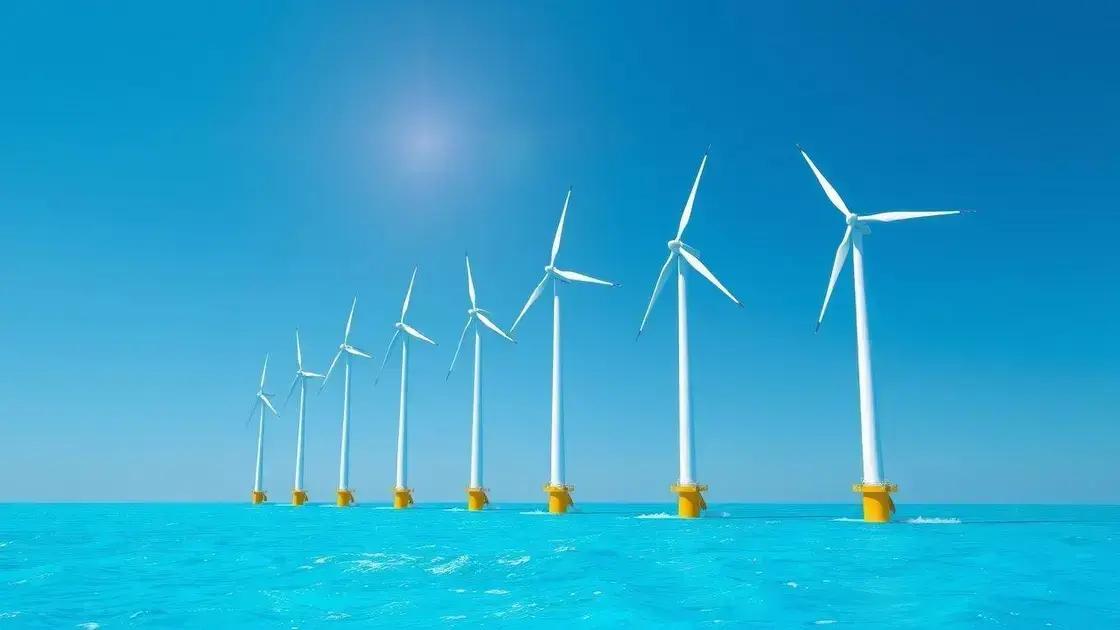
The benefits of offshore wind energy are numerous and impactful. One significant advantage is the ability to generate large amounts of renewable energy. Offshore wind farms can produce more electricity than land-based counterparts due to stronger and more consistent winds. This capacity plays a crucial role in reducing our reliance on fossil fuels.
Environmental Impact
Offshore wind energy significantly lowers greenhouse gas emissions. By harnessing natural wind power, we contribute to cleaner air and a healthier planet. Furthermore, these projects often have a smaller carbon footprint compared to traditional energy sources.
Economic Advantages
- Job creation: The development of offshore wind projects creates numerous jobs, from manufacturing to installation and maintenance.
- Investment opportunities: Governments and private sectors are increasingly investing in offshore wind energy, stimulating economic growth.
- Energy independence: By generating energy domestically, countries can reduce dependence on imported fuels.
- Cost-effective solutions: Technological advancements are driving down costs, making offshore wind increasingly competitive with other energy sources.
These benefits make offshore wind energy a sustainable and practical solution for our energy needs. In addition, the projects can coexist with marine ecosystems, as they often do not take up significant ocean space. Studies show that marine life can thrive around wind turbines, providing new habitats.
Governments worldwide are setting ambitious targets for expanding offshore wind energy. As technology improves, the potential for using this natural resource becomes even more promising. Every new offshore wind project contributes to a more sustainable and resilient energy future, showcasing the full potential of harnessing the wind.
Key challenges in offshore wind energy development
There are significant key challenges in offshore wind energy development that must be addressed to ensure successful projects. One major challenge is the high cost of installation and maintenance. Building offshore wind farms involves considerable financial investment due to the complex logistics and construction processes.
Environmental Concerns
Another challenge relates to environmental impacts. While offshore wind farms provide clean energy, they can disrupt marine ecosystems. Developers must conduct thorough environmental assessments to minimize harm to wildlife and habitats.
Technical Challenges
- Weather conditions: Harsh marine environments can make construction and maintenance tasks difficult.
- Technology limitations: While advancements have been made, there are still limitations regarding turbine capacity and efficiency.
- Grid connection: Ensuring a stable and reliable connection to the onshore power grid can be complex and costly.
- Logistics: Transporting materials and personnel to offshore sites can be challenging, requiring specialized vessels and equipment.
Regulatory hurdles also create obstacles for developers. Navigating through permits and regulations can take time and resources, delaying projects. Each country has unique rules that govern offshore wind energy development, which further complicates the process.
Funding and financing remain critical concerns. Securing the necessary investment for offshore projects can be challenging, as they require large upfront costs with long payback periods. As markets evolve, developers need to find innovative financing solutions to attract investors.
Future trends in offshore wind energy projects

The future trends in offshore wind energy projects are shaping how we view renewable energy. As technology evolves, the efficiency and capacity of offshore wind farms are expected to improve significantly. Innovations in turbine design and energy storage solutions are driving this change.
Advancements in Technology
One exciting trend is the development of larger and more efficient wind turbines. These turbines can capture more wind energy and provide greater electricity output. Floating wind farms are another groundbreaking innovation. They allow for the installation of turbines in deeper waters, where wind patterns are more favorable.
Integration with Other Renewable Sources
- Hybrid energy systems: Combining offshore wind with solar or wave energy can create a more stable energy supply.
- Smart grids: Smart technology can optimize energy distribution, making it easier to manage energy from various sources.
- Energy storage solutions: Enhanced storage technologies enable better management of energy supply and demand.
- Hybrid vessels: These can transport materials and personnel while generating electricity from wind and solar energy.
Additionally, many countries are increasing their investment in offshore wind energy. Governments worldwide are setting ambitious targets for renewable energy generation. This push for green energy is expected to accelerate project development and implementation. As policies supporting sustainable practices become more prevalent, private investments in offshore wind are likely to rise.
Offshore wind energy projects are also becoming more cost-competitive. Falling costs in installation and maintenance are making them attractive options for energy developers. As economies of scale kick in, we can expect lower prices for consumers as well.
Overall, the future of offshore wind energy looks bright. With innovations in technology and strong support from governments, these projects will play a critical role in achieving global energy goals.
offshore wind energy projects are paving the way for a sustainable energy future. They offer numerous benefits, including reduced emissions and job creation. Although there are challenges, such as regulatory hurdles and environmental impacts, ongoing technological advancements are making these projects more viable. With increasing investments and support from governments worldwide, the potential for offshore wind energy is brighter than ever. As we move forward, these projects will play a crucial role in achieving our renewable energy goals.
FAQ – Frequently Asked Questions about Offshore Wind Energy Projects
What are offshore wind energy projects?
Offshore wind energy projects involve the installation of wind turbines in bodies of water to harness wind energy for electricity generation.
What are the benefits of offshore wind energy?
Benefits include reduced greenhouse gas emissions, job creation, energy independence, and the generation of substantial electricity from renewable sources.
What challenges do offshore wind energy projects face?
Challenges include high installation costs, environmental impacts, regulatory hurdles, and technical difficulties related to weather and logistics.
What future trends can we expect in offshore wind energy?
Future trends may include advancements in turbine technology, floating wind farms, improved grid integration, and increased investments in renewable energy initiatives.
